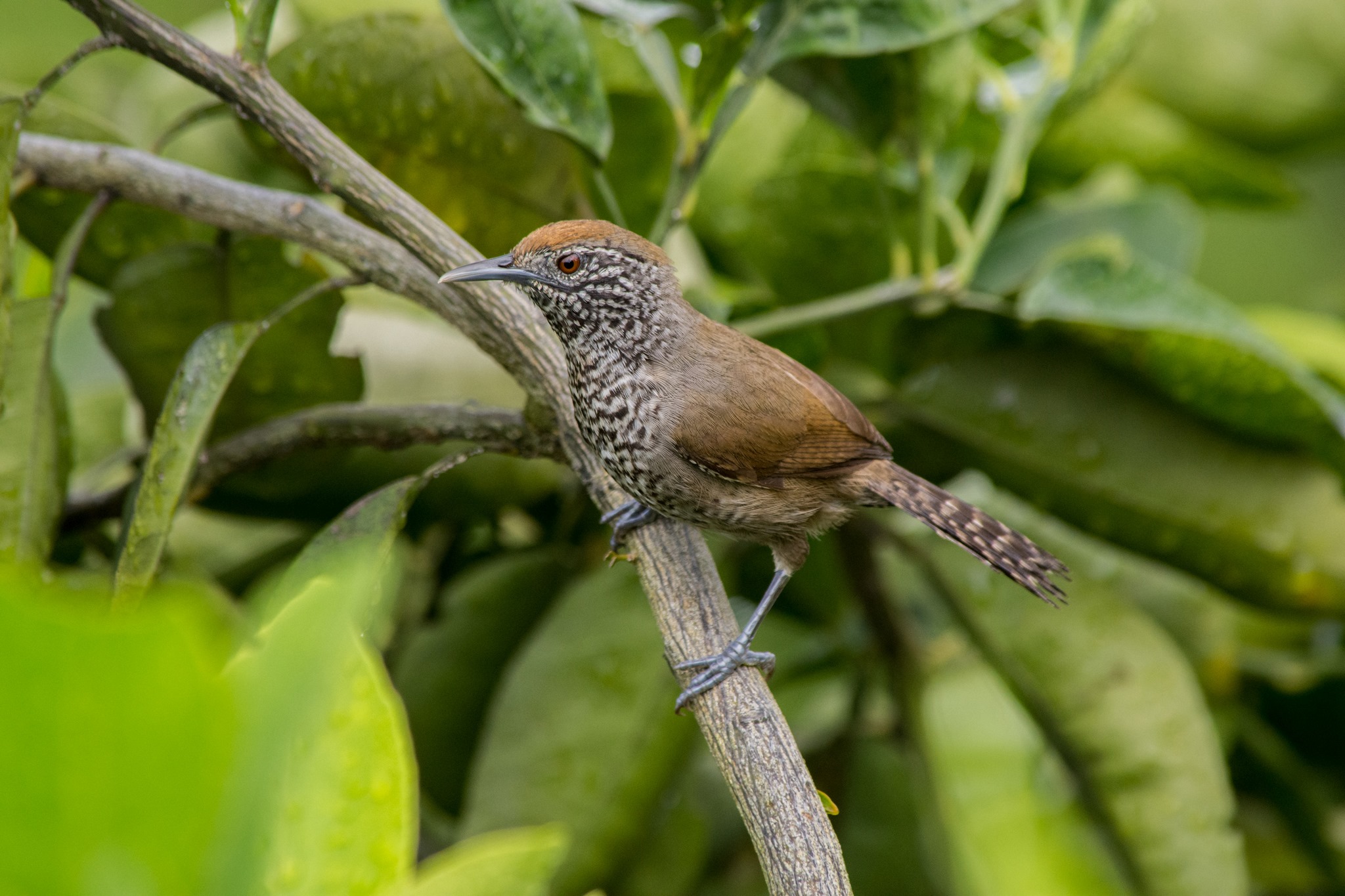Meaning of Name: Pheugopedius: Gr. pheugo= to shun and pous, podos= foot. sclateri: In honor of Dr Philip Lutley Sclater (1829-1913) English ornithologist, collector.
ORDER: PASSERINE
FAMILY TROGLODYTIDAE
This family has some characteristics by which it stands, first, plumage coloration is more or less similar to the habitat in which it lives what serves to camouflage themselves, therefore prevail plumages coffee shades, reddish, gray, beige or black and white, and sometimes presents lists, barred or stained patterns; second, they are highlighted by the arrangement of the tail usually kept in a perpendicular and rigid position at the time they are perched or singing.
Sub-species: Speckle-breasted Wren (Pheugopedius sclateri paucimaculatus), (Sharpe), 1882. W Ecuador (Manabí S to Loja).
(Pheugopedius sclateri sclateri), (Taczanowski), 1879. R Marañón drainage in extreme S Ecuador and N Peru (Cajamarca).
Description
It measures 13 to 14 cm. The sides of the face and black mottled white collar and crown reddish brown, back and medium brown tail, primary and secondary dark brown ridley, chin to the upper belly covered with fine white and black bars, wider and diffuse in the lower belly and flanks, reddish brown eyes; dark slate-colored legs.
Distribution
They are native to the Neotropics, where they are distributed from northern Mexico through Central and South America to central Bolivia and central and southeastern Brazil. Its members are known by the popular name of cucaracheros4 and also ratonas or wren.
Habitat
It is seen in bushes and undergrowth in forests, both humid and driest. It feeds on insects floor in the understory, usually walk in pairs, often it joins mixed flocks with anthills and others.
Behavior
They generally walk in pairs and tend to be elusive in dense understory vegetation; most do not join mixed flocks to forage. Most of them emit rich and wonderful musical songs, usually performed in duet by the couple. They are much more heard than seen.
Vocalization/ Voice
They are birds that produce melodious and powerful songs with which we can detect their presence because they are experts in camouflage and mimicry and often are almost impossible to observe.
https://www.xeno-canto.org/573315









